1 What if…Choice of the functional form

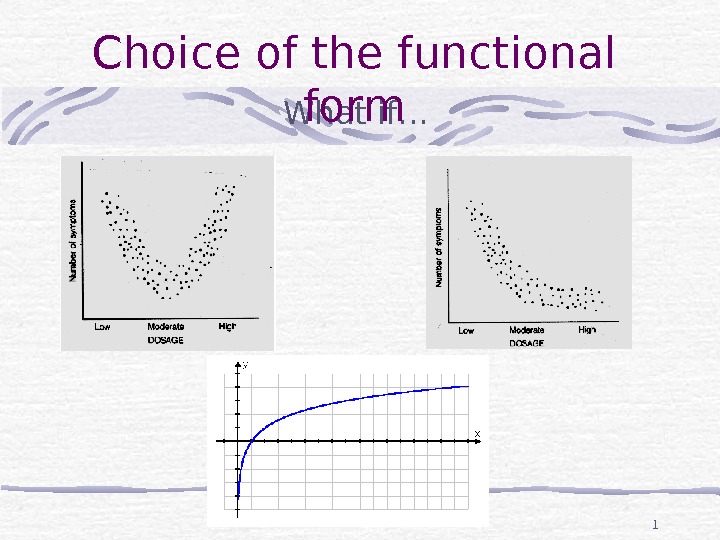
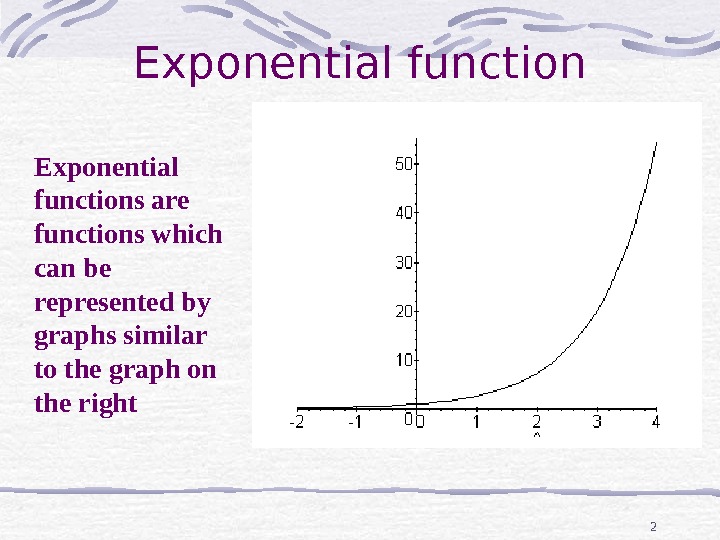
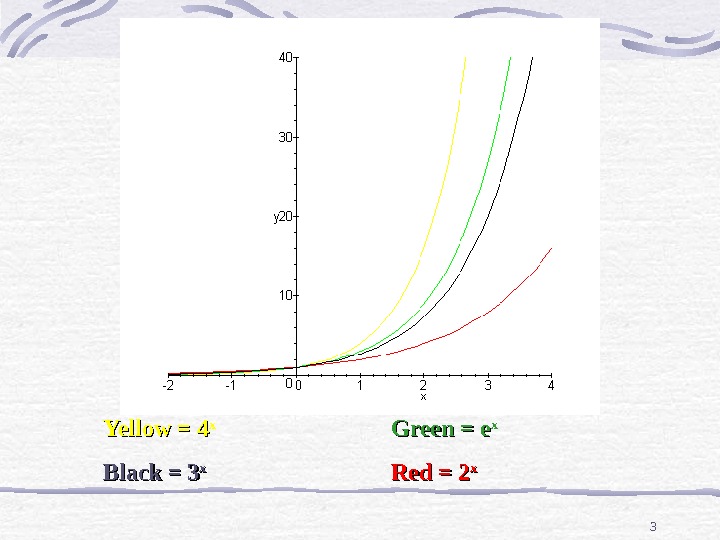
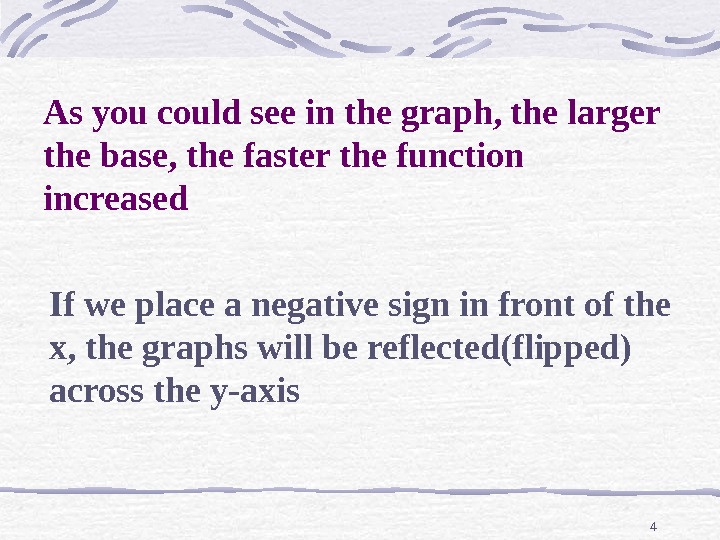
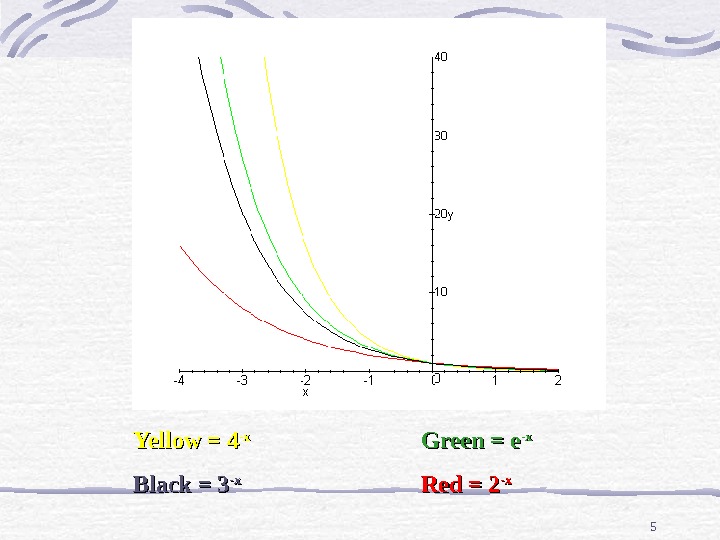
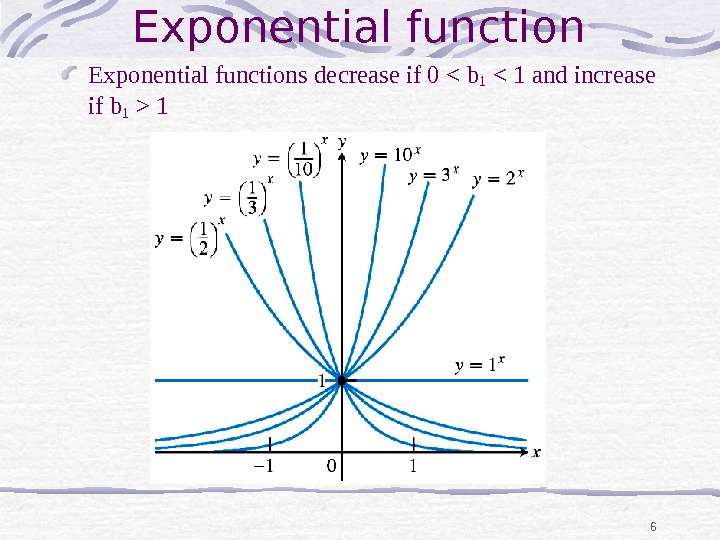
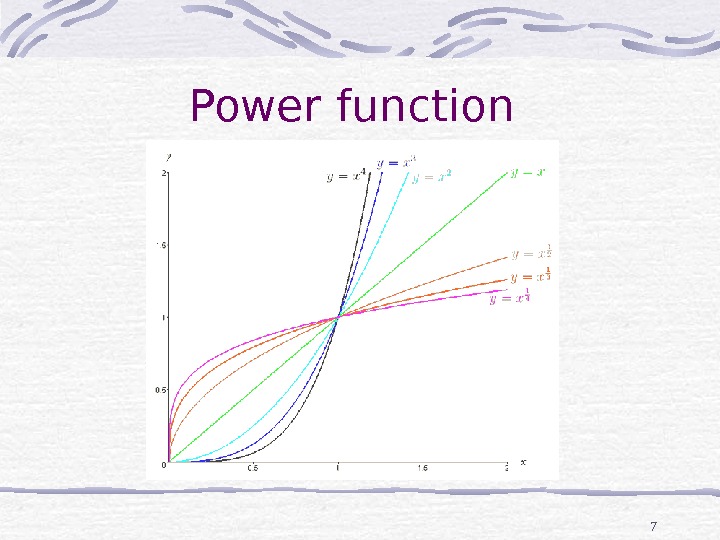
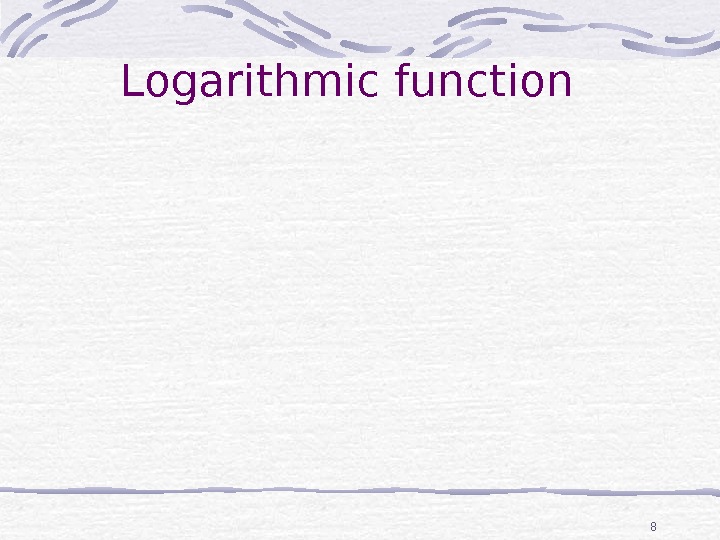
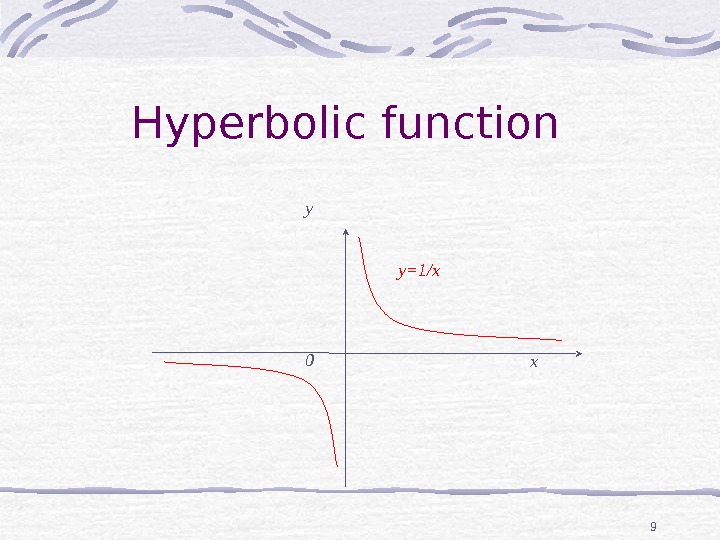
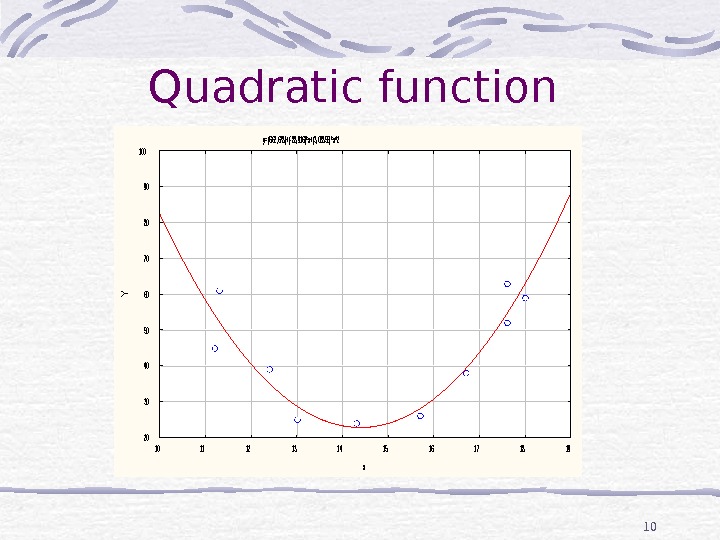
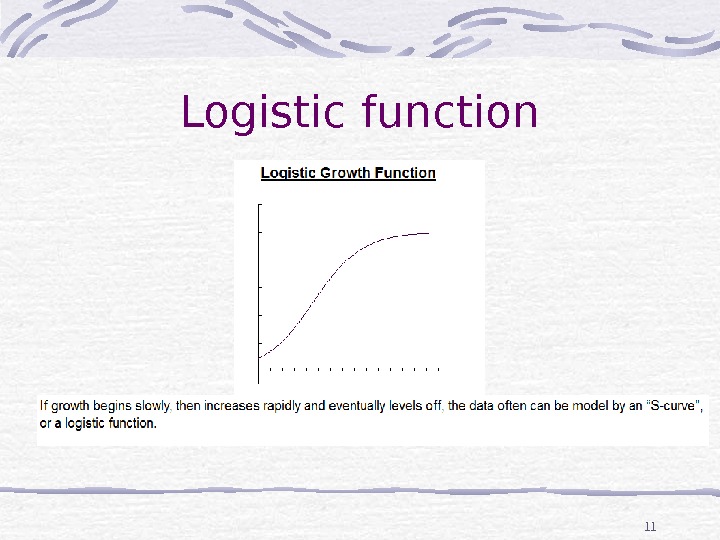
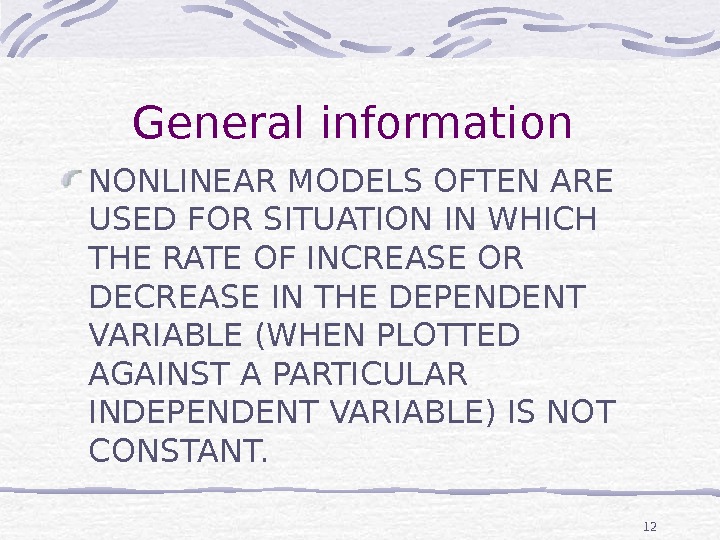
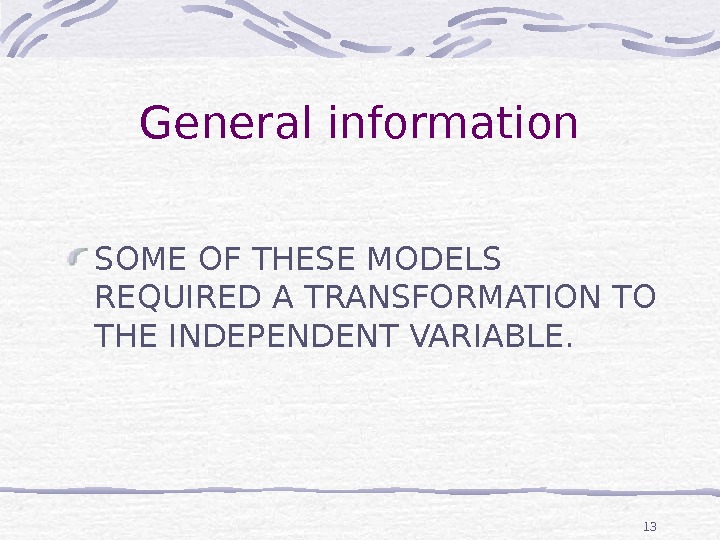
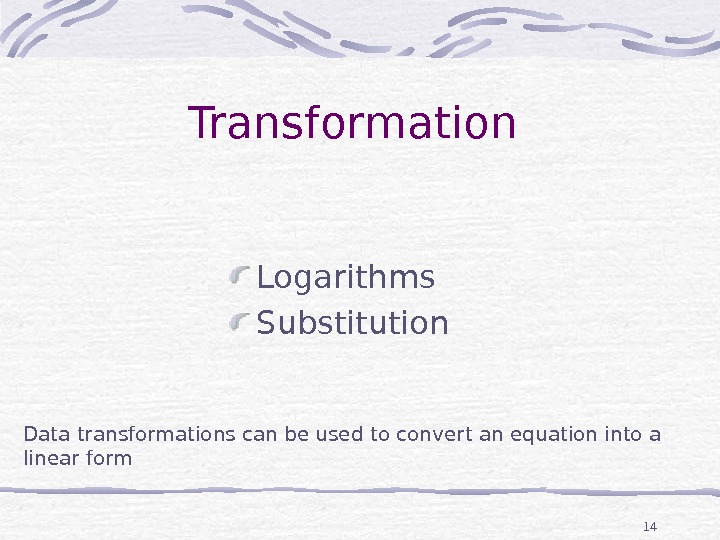
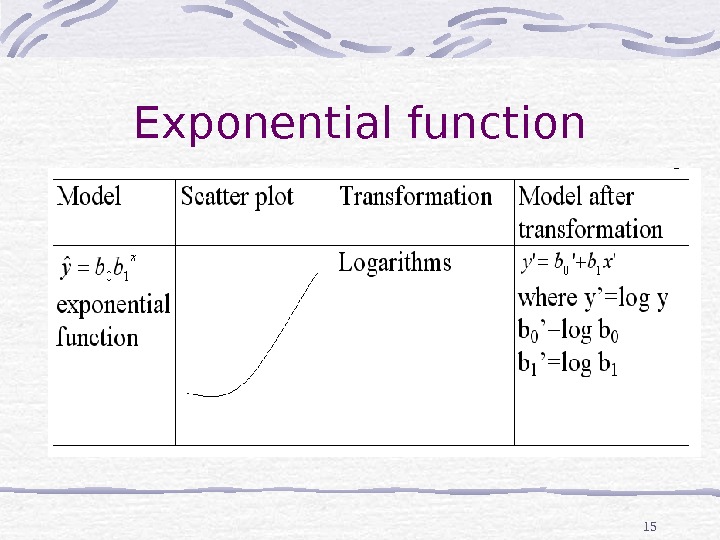
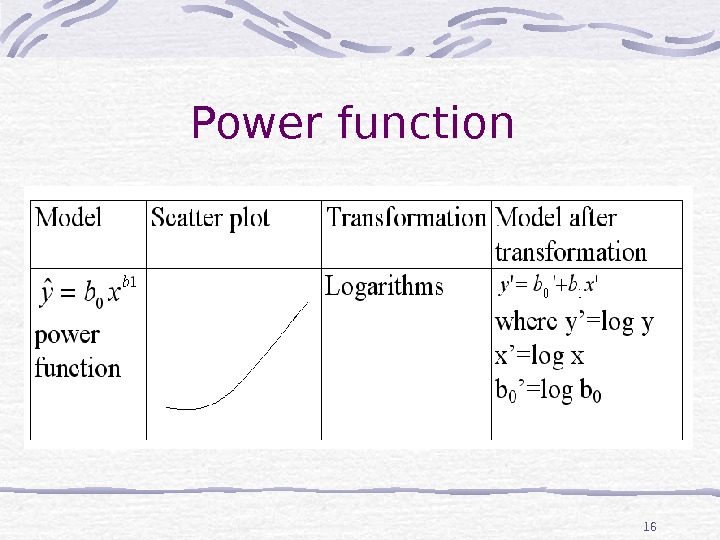
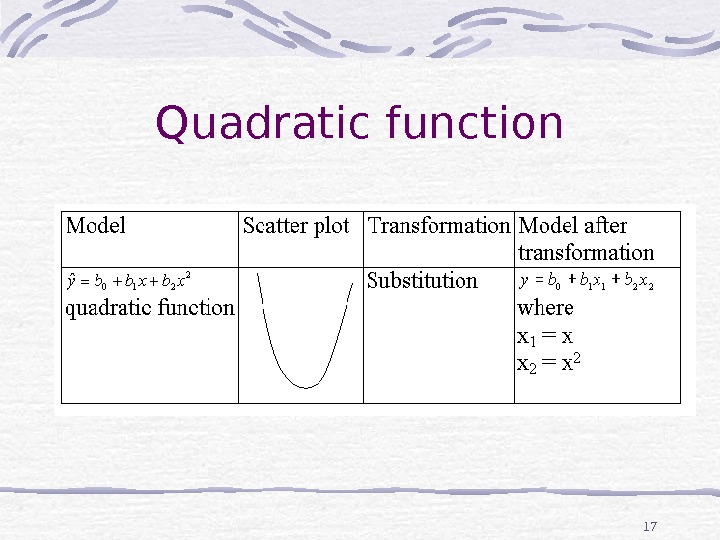
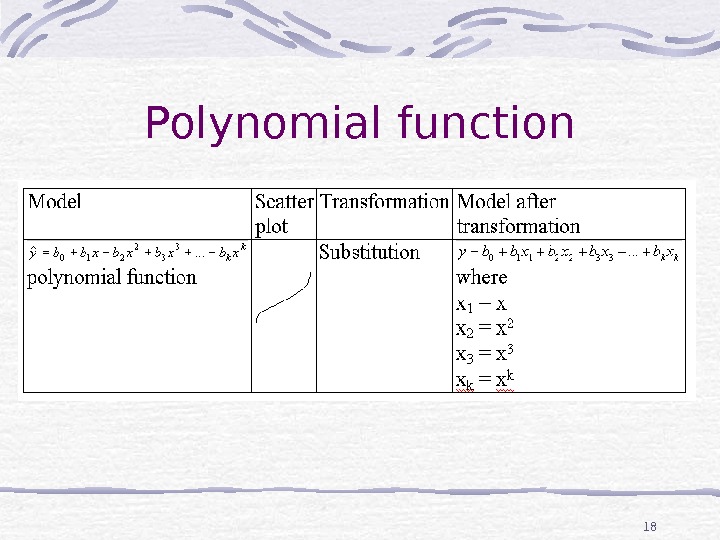
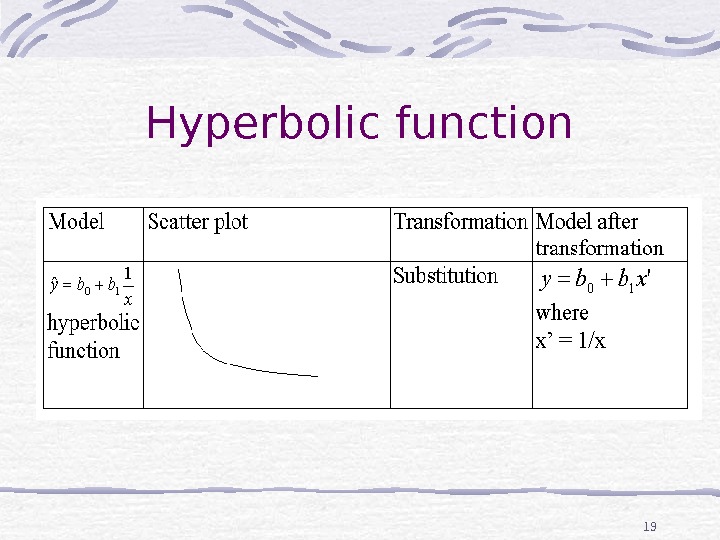
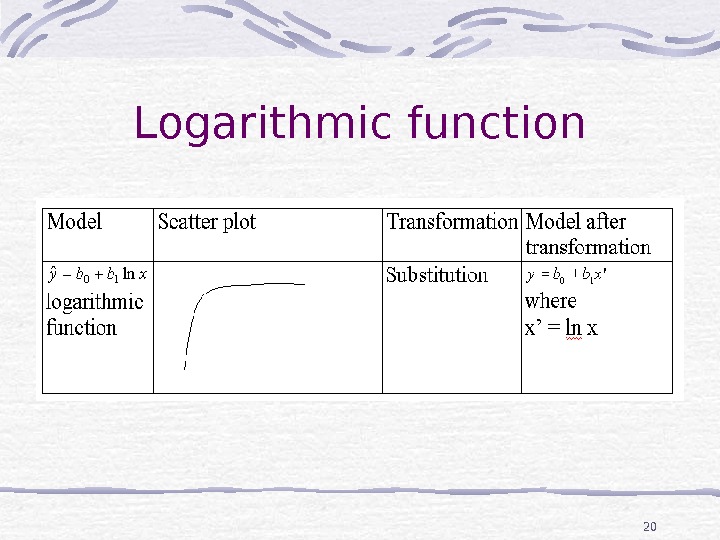
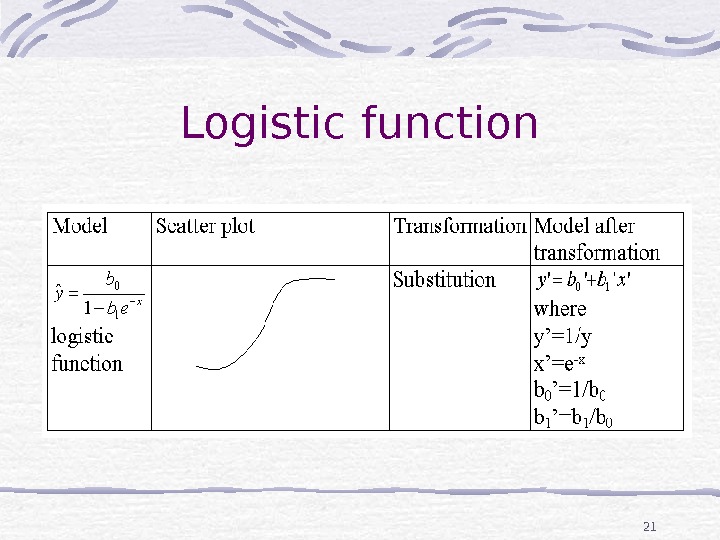
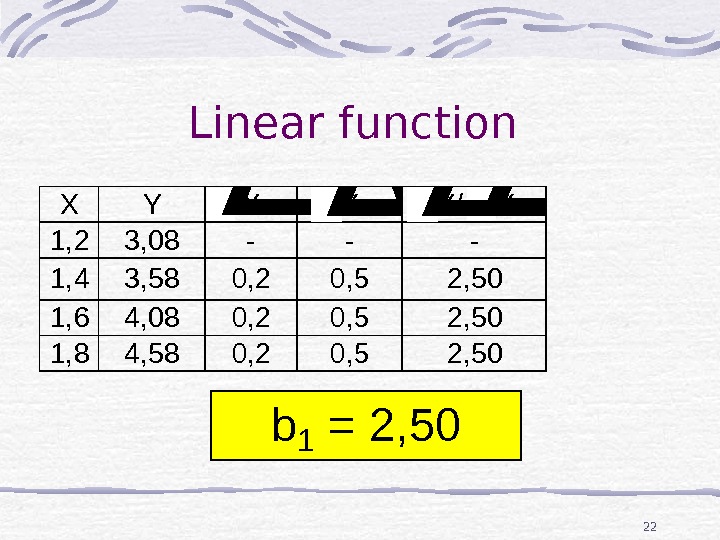
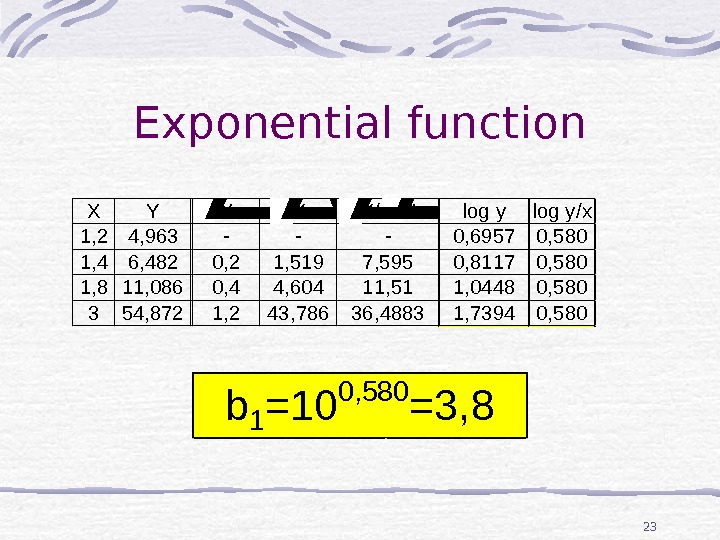
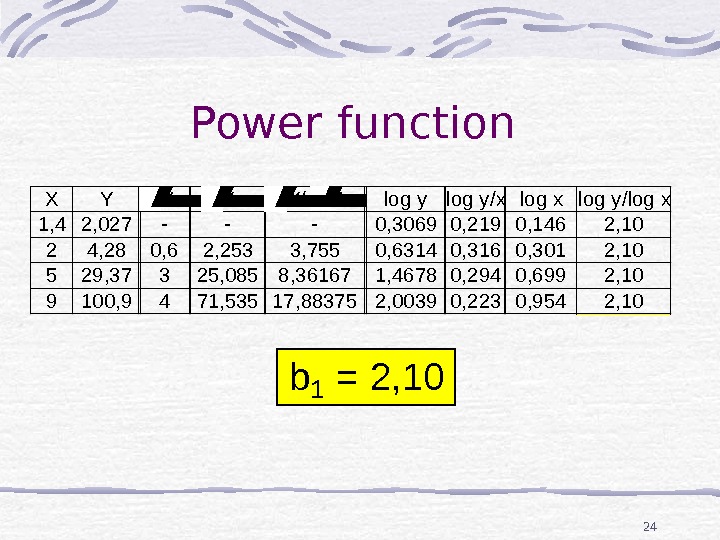
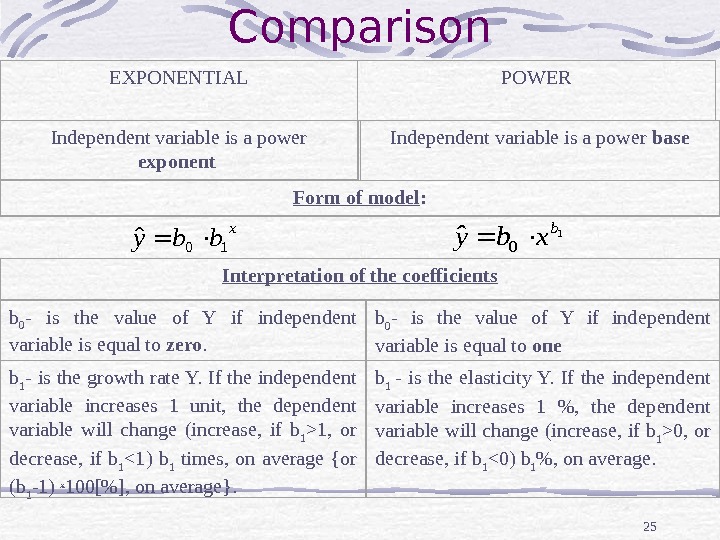
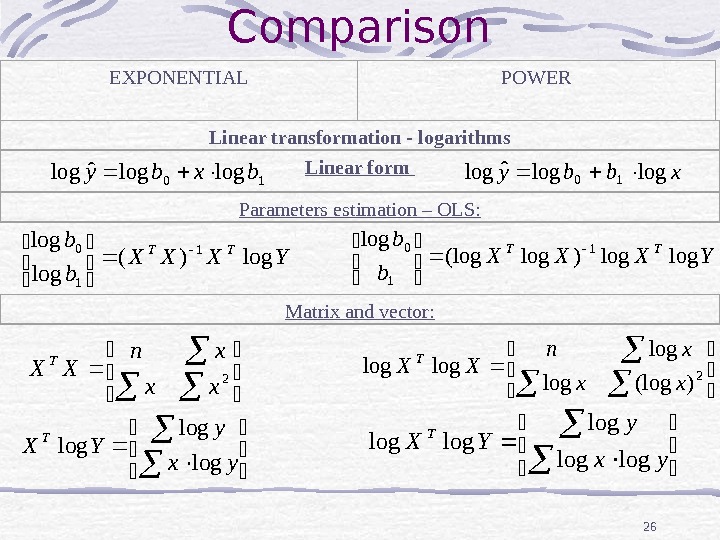
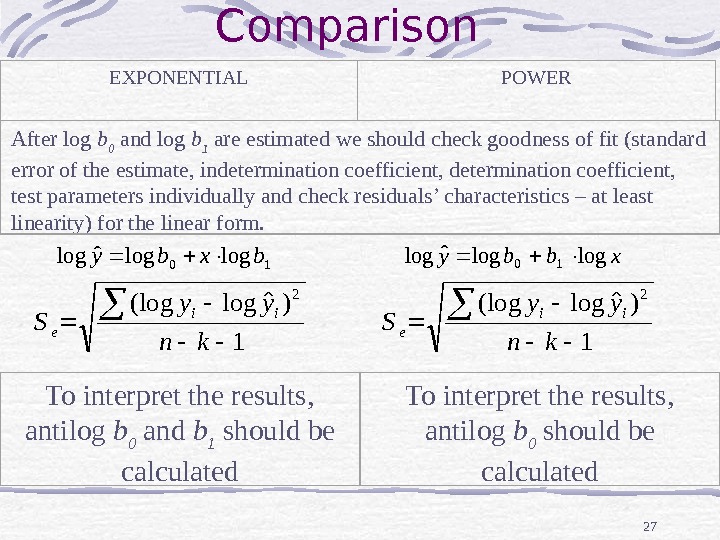
- Размер: 1.2 Mегабайта
- Количество слайдов: 27
Описание презентации 1 What if…Choice of the functional form по слайдам
 1 What if…Choice of the functional form
1 What if…Choice of the functional form
 2 Exponential function Exponential f unctions are functions which can be represented by graphs similar to the graph on the right
2 Exponential function Exponential f unctions are functions which can be represented by graphs similar to the graph on the right
 3 Yellow = 4 xx Green = e xx Black = 3 xx Red = 2 xx
3 Yellow = 4 xx Green = e xx Black = 3 xx Red = 2 xx
 4 As you could see in the graph, the larger the base, the faster the function increased If we place a negative sign in front of the x, the graphs will be reflected(flipped) across the y-axis
4 As you could see in the graph, the larger the base, the faster the function increased If we place a negative sign in front of the x, the graphs will be reflected(flipped) across the y-axis
 5 Yellow = 4 -x-x Green = e -x-x Black = 3 -x-x Red = 2 -x-x
5 Yellow = 4 -x-x Green = e -x-x Black = 3 -x-x Red = 2 -x-x
 6 Exponential functions decrease if 0 < b 1
6 Exponential functions decrease if 0 < b 1
 7 Power function
7 Power function
 8 Logarithmic function number of methylene groups, n 0 100 200 300 400 500 Tf(exp)/ K
8 Logarithmic function number of methylene groups, n 0 100 200 300 400 500 Tf(exp)/ K
 9 Hyperbolic function y x 0 y=1/x
9 Hyperbolic function y x 0 y=1/x
 10 Quadratic function y=(662, 678)+(-88, 916)*x+(3, 08855)*x^2 10111213141516171819 x 20 30 40 50 60 70 80 90 100 Y
10 Quadratic function y=(662, 678)+(-88, 916)*x+(3, 08855)*x^2 10111213141516171819 x 20 30 40 50 60 70 80 90 100 Y
 11 Logistic function
11 Logistic function
 12 General information NON LINEAR MODELS OFTEN ARE USED FOR SITUATION IN WHICH THE RATE OF INCREASE OR DECREASE IN THE DEPENDENT VARIABLE (WHEN PLOTTED AGAINST A PARTICULAR INDEPENDENT VARIABLE) IS NOT CONSTANT.
12 General information NON LINEAR MODELS OFTEN ARE USED FOR SITUATION IN WHICH THE RATE OF INCREASE OR DECREASE IN THE DEPENDENT VARIABLE (WHEN PLOTTED AGAINST A PARTICULAR INDEPENDENT VARIABLE) IS NOT CONSTANT.
 13 General information SOME OF THESE MODELS REQUIRED A TRANSFORMATION TO THE INDEPENDENT VARIABLE.
13 General information SOME OF THESE MODELS REQUIRED A TRANSFORMATION TO THE INDEPENDENT VARIABLE.
 14 Transformation Logarithms Substitution Data transformations can be used to convert an equation into a linear form
14 Transformation Logarithms Substitution Data transformations can be used to convert an equation into a linear form
 15 Exponential function
15 Exponential function
 16 Power function
16 Power function
 17 Quadratic function
17 Quadratic function
 18 Polynomial function
18 Polynomial function
 19 Hyperbolic function
19 Hyperbolic function
 20 Logarithmic function
20 Logarithmic function
 21 Logistic function
21 Logistic function
 22 Linear function b 1 = 2, 50 X Y 1, 2 3, 08 1, 4 3, 58 1, 6 4, 08 1, 8 4, 58 XY — 0, 20, 5 Y/ X — 2,
22 Linear function b 1 = 2, 50 X Y 1, 2 3, 08 1, 4 3, 58 1, 6 4, 08 1, 8 4, 58 XY — 0, 20, 5 Y/ X — 2,
 23 Exponential function. XY 1, 24, 963 1, 46, 482 1, 811, 086 354, 872 XY — 0, 21, 519 0, 44, 604 1, 243, 786 Y/ X — 7, 595 11, 51 36, 4883 log y 0, 6957 0, 8117 1, 0448 1, 7394 log y/x 0, 580 b 1 =10 0, 580 =3,
23 Exponential function. XY 1, 24, 963 1, 46, 482 1, 811, 086 354, 872 XY — 0, 21, 519 0, 44, 604 1, 243, 786 Y/ X — 7, 595 11, 51 36, 4883 log y 0, 6957 0, 8117 1, 0448 1, 7394 log y/x 0, 580 b 1 =10 0, 580 =3,
 24 Power function XY 1, 42, 027 24, 28 529, 37 9100, 9 XY — 0, 62, 253 325, 085 471, 535 Y/ X — 3, 755 8, 36167 17, 88375 log y 0, 3069 0, 6314 1, 4678 2, 0039 log y/x 0, 219 0, 316 0, 294 0, 223 log x 0, 146 0, 301 0, 699 0, 954 log y/log x 2, 10 b 1 = 2,
24 Power function XY 1, 42, 027 24, 28 529, 37 9100, 9 XY — 0, 62, 253 325, 085 471, 535 Y/ X — 3, 755 8, 36167 17, 88375 log y 0, 3069 0, 6314 1, 4678 2, 0039 log y/x 0, 219 0, 316 0, 294 0, 223 log x 0, 146 0, 301 0, 699 0, 954 log y/log x 2, 10 b 1 = 2,
 25 EXPONENTIAL POWER Independent variable is a power exponent Independent variable is a power base Form of model : x bby 10ˆ1 0ˆ b xby Interpretation of the coefficients b 0 — is the value of Y if independent variable is equal to zero. b 0 — is the value of Y if independent variable is equal to one b 1 — is the growth rate Y. If the independent variable increases 1 unit, the dependent variable will change (increase, if b 1 >1, or decrease, if b 1 0, or decrease, if b 1 <0) b 1 %, on average. Comparison
25 EXPONENTIAL POWER Independent variable is a power exponent Independent variable is a power base Form of model : x bby 10ˆ1 0ˆ b xby Interpretation of the coefficients b 0 — is the value of Y if independent variable is equal to zero. b 0 — is the value of Y if independent variable is equal to one b 1 — is the growth rate Y. If the independent variable increases 1 unit, the dependent variable will change (increase, if b 1 >1, or decrease, if b 1 0, or decrease, if b 1 <0) b 1 %, on average. Comparison
 26 Comparison EXPONENTIAL POWER Linear transformation — logarithms Linear form 10 loglogˆlogbxbyxbbyloglogˆlog 10 Parameters estimation – OLS: YXXX b b. TT log)( log 1 1 0 YXXX b b. TTloglog)log(log 1 1 0 Matrix and vector : 2 xx xn XX T yx y YX T log log 2 )(loglog xx xn XX T yx y YXT loglog
26 Comparison EXPONENTIAL POWER Linear transformation — logarithms Linear form 10 loglogˆlogbxbyxbbyloglogˆlog 10 Parameters estimation – OLS: YXXX b b. TT log)( log 1 1 0 YXXX b b. TTloglog)log(log 1 1 0 Matrix and vector : 2 xx xn XX T yx y YX T log log 2 )(loglog xx xn XX T yx y YXT loglog
 27 Comparison EXPONENTIAL POWER After log b 0 and log b 1 are estimated we should check goodness of fit (standard error of the estimate, indetermination coefficient, test parameters individually and check residuals’ characteristics – at least linearity) for the linear form. 10 loglogˆlogbxbyxbbyloglogˆlog 10 1 )ˆlog(log 2 kn yy S ii e To interpret the results, antilog b 0 and b 1 should be calculated To interpret the results, antilog b 0 should be calculated
27 Comparison EXPONENTIAL POWER After log b 0 and log b 1 are estimated we should check goodness of fit (standard error of the estimate, indetermination coefficient, test parameters individually and check residuals’ characteristics – at least linearity) for the linear form. 10 loglogˆlogbxbyxbbyloglogˆlog 10 1 )ˆlog(log 2 kn yy S ii e To interpret the results, antilog b 0 and b 1 should be calculated To interpret the results, antilog b 0 should be calculated

